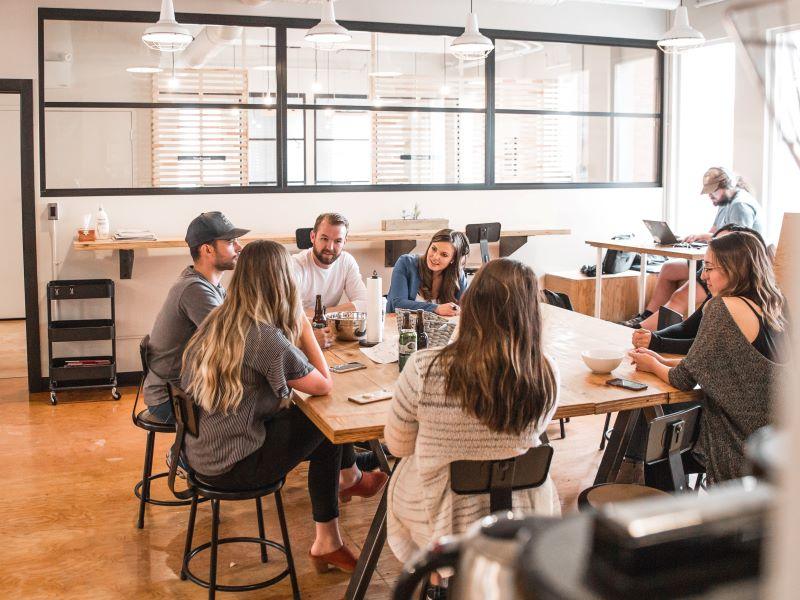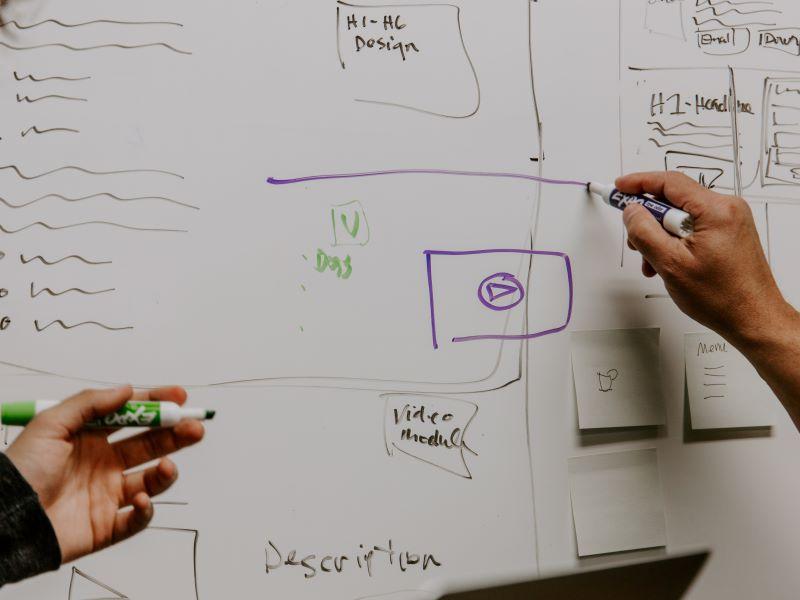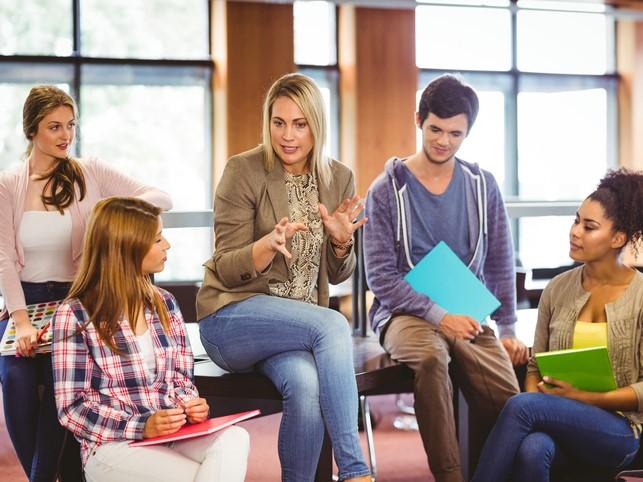Co-creating with students is a process by which students collaborate with teachers in designing their own learning experience. With an emphasis on student perspectives, it is based on constructivist learning theory, which says learners construct knowledge and meaning from lived experiences rather than from passively taking in information. Implicit in the concept of co-creation is a recognition that teaching is not a one-way process flowing from teacher to student. Meaningful learning opportunities are made possible by honouring student voices.
In traditional teacher-centred classrooms, the typical “banking model of education” described by Brazilian educator Paulo Freire, teachers transmit the value and experience to students. Students are interchangeable containers of information. This casts students as passive rather than active participants in their own learning. When students co-create, the learning environment is transformed and enriched by their lived experiences.
Co-creating for equity
One question to consider is how students are co-creating for equity. As students create, the goal is not to replicate existing systems, processes or resources. Co-creation should create opportunity and space for students to advance social justice in their learning. Sarah Lambert, a researcher in open education, defines recognitive justice as sociocultural diversity in the curriculum and representational justice as self-determination of marginalised people and groups to speak for themselves. These concepts can be incorporated within co-creation activities to develop meaningful learning experiences.
- Six tips on helping your students improve their teamwork skills
- How a rich extracurricular campus life nurtures well-rounded individuals
- For students’ sake, we shouldn’t be too proud to seek collaboration
Open pedagogy
A powerful form of co-creation is open pedagogy, where students are invited to openly license their contributions in the class. Students can apply a Creative Commons licence to their work and share it through an open repository so that others can find their work as well as potentially revise or remix it. Open pedagogy empowers students by making their contributions publicly and openly available.
Renewable assignments
An option for openly co-creating with students is developing renewable assignments. These are assignments resulting in the production of materials that have a value beyond the students’ own learning, such as content tutorials for future classes. The students are then invited to openly license and publicly share their work with the global community.
My colleague Jennifer Van Allen and I developed the Renewable Assignment Design Framework to develop a process in which teachers can classify their assignments, consider meaningful student contributions, select tools and repositories, design intentional negotiations for openness, and finalise the assignment. These openly licensed co-created resources are then available for future students in the class and around the world to edit and localise, as well as update through revision and remixing.
Co-creating with students can range from an individual assignment to entire curricula. While this may initially seem daunting, any space in the syllabus, course or curriculum that provides students with choices provides a start for co-creation. Below are four considerations for implementing co-creation with students.
1. Start small
The initial foray into co-creation can be intimidating for teachers, so it helps to start small. Identify where in the course students already have choices and consider other parts of the course where that can be replicated or expanded. By taking small risks and developing opportunities for co-creation, teachers can model their own learning process for students. Teachers can be transparent about how they are learning with students through co-creation. Co-creation does not necessarily mean that teachers let students make every decision about their learning. There can still be structure while including student voice.
2. Invite student feedback
Students need to feel that their voice is valued within co-creation. If they are asked to co-create but not then given space to reflect on how it went, they may feel dejected. Such reflections help to strengthen students’ metacognitive skills while also providing useful feedback for the teacher. Students can also provide peer feedback and strengthen their analytical skills in the process.
3. Engage in reflective practice
For both teachers and students, co-creation should be a reflective process. Educators need to think about their own experience of co-creation to continue developing their teaching skills and consider how to improve and refine the process, throughout the course and in the future. Build a supportive community of practice by finding other teachers with whom to share reflections and advice on co-creating.
4. Consider assessment and ungrading
Evaluating student learning is part of any conversation about teaching. Ungrading can take many forms but generally rests on providing frequent formative feedback, dialogue with students and student self-evaluation. This type of assessment practice fits well with co-creation as it values student voices and treats students as more than a number or letter grade.
Co-creating with students gives them agency over their learning and helps to develop self-direction, confidence, creativity and critical thinking skills. It enables educators to create meaningful learning experiences for students by engaging in a more challenging and rewarding teaching practice.
If you found this interesting and want advice and insight from academics and university staff delivered direct to your inbox each week, sign up for the THE Campus newsletter.




comment